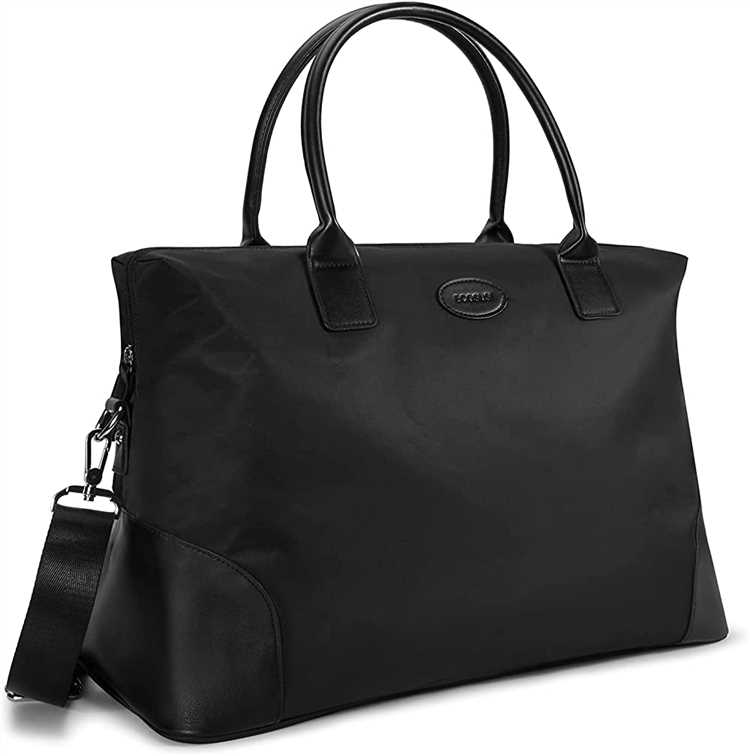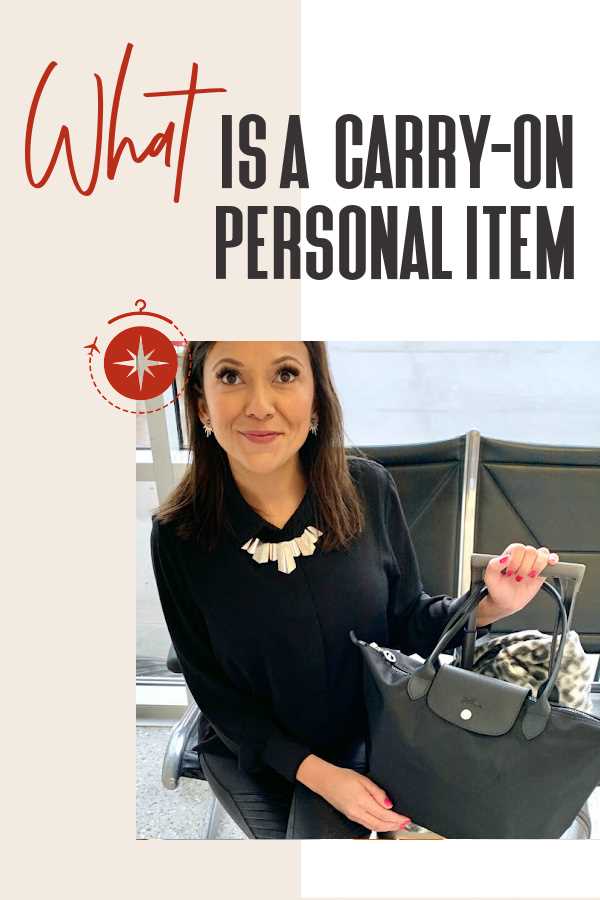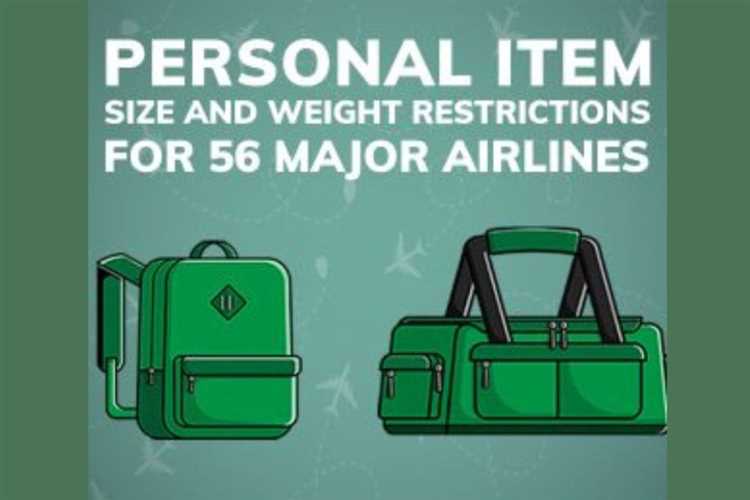
When it comes to packing for a trip, one question that often comes up is whether or not a grocery bag can be considered a personal item. This may seem like a simple question, but the answer can vary depending on the airline and their specific policies.
Some airlines may consider a grocery bag to be a personal item if it meets certain criteria. For example, it may need to fit under the seat in front of you and not obstruct the aisles or emergency exits. Additionally, it may need to be small enough to meet the airline’s size restrictions for personal items.
However, there are other airlines that may not consider a grocery bag to be a personal item at all. They may have more specific guidelines and restrictions on what can be brought on board as a personal item, and a grocery bag may not meet those criteria.
It’s important to check with the airline you are flying with to see if they consider a grocery bag to be a personal item. Their website or customer service department should have the most up-to-date information on their policies. If in doubt, it may be a good idea to pack a smaller bag or opt for a different type of personal item to avoid any potential issues at the airport.
- Definition of a Personal Item
- What is Considered a Personal Item?
- 1. Purse or handbag:
- 2. Laptop or briefcase:
- Types of Personal Items
- Examples of Personal Items
- Carry-On Baggage vs Personal Item
- Difference Between Carry-On Baggage and Personal Item
- Carry-On Baggage
- Personal Item
- Are Grocery Bags Considered Personal Items?
- Can You Bring a Grocery Bag as a Personal Item on a Plane?
- undefined
- Is a grocery bag considered a personal item?
- Can I bring a grocery bag as my personal item on a plane?
- What are the size restrictions for a grocery bag to be considered a personal item?
- Will I be charged an extra fee if I bring a grocery bag as my personal item?
Definition of a Personal Item
A personal item is an item that an individual carries with them for personal use or convenience. It is typically small in size and is usually placed under the seat in front of the individual or in an overhead compartment on an airplane.
A personal item can include items such as a purse, a laptop bag, a backpack, or a briefcase. These items hold personal belongings that an individual may need during their journey, such as travel documents, electronics, or personal care items.
It is important to note that there are specific size and weight restrictions for personal items, depending on the mode of transportation. For example, many airlines have size and weight limits for personal items, while some may allow a slightly larger personal item if it can still fit under the seat in front of the individual.
While a grocery bag may hold personal belongings, it is not typically considered a personal item in the context of transportation. This is because a grocery bag is not specifically designed for personal use or convenience during travel and may not meet the size and weight restrictions set by transportation authorities.
In conclusion, a personal item is a small item that an individual carries for personal use or convenience during travel. It typically includes items such as a purse, laptop bag, backpack, or briefcase. However, a grocery bag does not fit the definition of a personal item in the context of transportation due to its design and purpose.
What is Considered a Personal Item?
When traveling, it’s important to know what items are considered personal items. These are generally small bags or items that you can carry on the plane in addition to your carry-on luggage. Airlines have specific restrictions on the size and type of personal item you can bring, so it’s best to check with your specific airline for their guidelines.
Some common examples of personal items include:
1. Purse or handbag:
A small bag that can fit under the seat in front of you. This can include a clutch, tote bag, or small backpack.
2. Laptop or briefcase:
A bag specifically designed to carry and protect your laptop or other electronic devices. This is often allowed in addition to a carry-on bag.
Other items that may be considered personal items include:
- Small backpack or daypack
- Camera bag
- Diaper bag
- Briefcase
- Shopping bag from the airport or duty-free store
- Umbrella
- Jacket or coat
- Travel pillow
It’s important to note that some airlines may have additional restrictions or specific requirements for personal items. For example, some airlines may specify that your personal item must fit under the seat in front of you, while others may allow it to be stowed in the overhead bin. It’s always a good idea to check with your airline before your trip to ensure you are aware of their specific guidelines.
Overall, a grocery bag is generally not considered a personal item for the purpose of air travel. However, it’s best to check with your specific airline for their guidelines on what is considered a personal item.
Types of Personal Items
When it comes to personal items, there are a variety of things that can fall into this category. These items are typically carried with you during travel or kept close at hand for easy access. Here are some common types of personal items:
- Wallet or purse: This is where you keep your cash, cards, and other essential personal items.
- Passport and ID card: These are necessary for identification purposes when traveling.
- Mobile phone: This is an essential item for communication and staying connected.
- Keys: These are needed to access your home, car, or other personal spaces.
- Sunglasses: A pair of sunglasses helps protect your eyes from sunlight and can also be a fashion statement.
- Medication: If you have any prescribed medication, it’s important to carry it with you.
- Headphones or earphones: These are useful for listening to music, podcasts, or making phone calls.
- Chargers: Carrying chargers for your electronics ensures they can be powered up when needed.
- Snacks: Having some snacks on hand can be a lifesaver during long journeys or when hunger strikes.
- Pen and notepad: These are useful for taking notes, jotting down important information, or leaving messages.
Remember, the specific personal items you carry may vary depending on your needs, preferences, and the nature of your travel.
Examples of Personal Items
When traveling, it’s important to know what counts as a personal item. Here are some examples of personal items that are commonly accepted by airlines:
- A small backpack or purse
- A laptop bag
- A briefcase
- A camera bag
- A diaper bag
- A shopping bag with duty-free items purchased at the airport
- A small musical instrument, such as a violin or flute
- A small pet carrier
These items are generally allowed in addition to your carry-on baggage. However, it’s always good to check with the specific airline you are flying with to ensure their policies regarding personal items.
It’s worth noting that some items, like a grocery bag, may not typically be considered a personal item by airlines. While you might be able to bring it on board as an additional item, it’s important to remember that it may need to meet certain size and weight restrictions, and it may be subject to additional fees.
Ultimately, it’s always best to check with the airline before your flight to ensure you are following their guidelines regarding personal items. This will help avoid any surprises or complications at the airport.
Carry-On Baggage vs Personal Item

When traveling by airplane, it is important to understand the difference between carry-on baggage and a personal item. Most airlines allow passengers to bring one carry-on bag and one personal item on board with them.
A carry-on bag is usually a larger piece of luggage that is stored in the overhead compartments or under the seat in front of you. It can be a suitcase, duffle bag, or backpack that meets the airline’s size and weight restrictions.
A personal item, on the other hand, is a smaller item that you can keep with you during the flight. This includes a purse, laptop bag, briefcase, or a small backpack. It should be able to fit under the seat in front of you.
The purpose of the carry-on baggage and personal item policies is to ensure passenger safety, comfort, and efficient boarding and deplaning processes. By limiting the size and number of bags each passenger can bring on board, airlines can minimize the risk of injuries caused by falling luggage, reduce clutter in the cabin, and speed up the security screening and boarding processes.
It is important to note that the specific size and weight restrictions for carry-on baggage and personal items can vary between airlines. Therefore, it is always a good idea to check the airline’s website or contact their customer service before your flight to make sure you are complying with their requirements.
Additionally, it is worth mentioning that some airlines may have additional restrictions or charges for certain types of items, such as musical instruments or pets. Therefore, if you plan to bring any special items on board, it is important to familiarize yourself with the airline’s policies beforehand to avoid any surprises or additional fees.
In conclusion, while both carry-on baggage and personal items are allowed on most flights, they serve different purposes. Understanding the difference between the two and complying with the airline’s requirements will help ensure a smooth and hassle-free travel experience.
Difference Between Carry-On Baggage and Personal Item
When traveling by airplane, it’s important to understand the difference between carry-on baggage and personal items. Knowing what is classified as a carry-on and what can be considered a personal item can help you ensure you are complying with airline regulations and avoid any issues during your journey.
Carry-On Baggage

Carry-on baggage refers to the larger luggage that passengers are allowed to bring with them onto the airplane. This is typically stored in the overhead compartments or under the seat in front of you. The size and weight restrictions for carry-on baggage can vary depending on the airline, but in general, it is larger and can hold more items than a personal item. Carry-on baggage often includes suitcases, duffel bags, or backpacks.
Most airlines have specific guidelines for carry-on baggage, such as the maximum dimensions and weight allowed. It’s important to check your airline’s regulations before packing to ensure your carry-on baggage meets their requirements. Failure to comply with these guidelines may result in additional fees or the need to check your bag.
Personal Item
A personal item is a smaller bag or item that passengers are allowed to bring in addition to their carry-on baggage. Personal items are typically stored under the seat in front of you, allowing easy access throughout the flight. Examples of personal items include purses, laptop bags, backpacks, or small briefcases.
Personal items are generally smaller and more compact than carry-on baggage. While restrictions for personal items can also vary by airline, they are often required to fit within specific dimensions. It is important to check your airline’s guidelines to ensure your personal item meets their requirements.
| Characteristics | Carry-On Baggage | Personal Item |
|---|---|---|
| Size Restrictions | Can be larger | Generally smaller |
| Storage Location | Overhead compartments or under the seat | Under the seat |
| Examples | Suitcases, duffel bags, backpacks | Purses, laptop bags, backpacks |
It’s important to note that there may be additional restrictions or rules regarding the contents of both carry-on baggage and personal items. For example, items that are prohibited by airline regulations, such as sharp objects or liquids over a certain volume, may not be allowed in either your carry-on baggage or personal item.
Understanding the difference between carry-on baggage and personal items can help you pack efficiently for your trip and ensure a smooth travel experience. Always check your airline’s guidelines before packing to avoid any surprises at the airport.
Are Grocery Bags Considered Personal Items?
When it comes to traveling, there is always a question of what can be considered a personal item. While each airline has its own rules and regulations, it is important to know whether or not grocery bags are considered personal items.
In general, most airlines consider grocery bags as personal items. These bags are usually small and can easily fit under the seat in front of you or in the overhead bin. However, there are a few factors to consider.
Firstly, it is important to note that the size and weight of the grocery bag may play a role in whether or not it is considered a personal item. Airlines have specific limitations on the dimensions and weight of personal items, so it is always best to check with your specific airline before traveling.
Secondly, the contents of the grocery bag may also be a factor. If the bag contains strictly groceries, it is more likely to be considered a personal item. However, if it contains items that are not typically found in a grocery bag, such as electronics or fragile items, it may be subject to additional scrutiny.
It is important to remember that the final decision rests with the airline and the flight attendants. If they determine that the grocery bag is too large or contains items that are not typically found in a personal item, they may require you to check it as a regular piece of luggage.
In conclusion, while most airlines consider grocery bags as personal items, it is important to check with your specific airline and be mindful of the size, weight, and contents of the bag. By doing so, you can ensure a smoother travel experience and avoid any surprises at the airport.
Can You Bring a Grocery Bag as a Personal Item on a Plane?

When it comes to traveling by plane, it’s essential to understand what items are considered personal and what items are not. Many people wonder if a grocery bag can be brought as a personal item on a plane. The answer to this question depends on a few factors.
Firstly, it’s important to note that each airline has its own rules and regulations regarding the size and type of personal items allowed on board. Some airlines may consider a grocery bag as a personal item, while others may not. Therefore, it’s crucial to check with your specific airline before your flight to ensure you comply with their guidelines.
Secondly, even if your airline allows grocery bags as personal items, you should consider the practicality of bringing one on board. Grocery bags are usually larger and less structured than traditional personal items, such as purses or backpacks. They may not fit under the seat in front of you or in the overhead bin, which could cause inconvenience for you and other passengers.
If you do decide to bring a grocery bag as a personal item, make sure it meets the size restrictions set by the airline. Generally, personal items should be small enough to fit under the seat in front of you. Additionally, consider the contents of the bag. If it contains items that are not allowed on the plane, such as liquids over the specified limit, it may not be permitted as a personal item.
In conclusion, whether or not a grocery bag can be brought as a personal item on a plane depends on the rules and regulations of the specific airline you are flying with. It is advisable to check with your airline in advance to ensure that you comply with their requirements. However, considering the practicality and size restrictions, it is recommended to opt for more traditional personal items like purses or backpacks when traveling by plane.
undefined
Is a grocery bag considered a personal item?
Yes, a typical grocery bag is usually considered a personal item. However, it ultimately depends on the specific airline’s rules and regulations.
Can I bring a grocery bag as my personal item on a plane?
In most cases, yes. Many airlines allow passengers to bring a grocery bag as their personal item as long as it meets the size restrictions set by the airline.
What are the size restrictions for a grocery bag to be considered a personal item?
The size restrictions for a grocery bag to be considered a personal item vary depending on the airline. It is best to check the specific airline’s website or contact their customer service for the exact dimensions allowed.
Will I be charged an extra fee if I bring a grocery bag as my personal item?
In most cases, bringing a grocery bag as your personal item should not result in any additional fees. However, it is always recommended to check with the airline beforehand to confirm their policies and avoid any surprises at the airport.